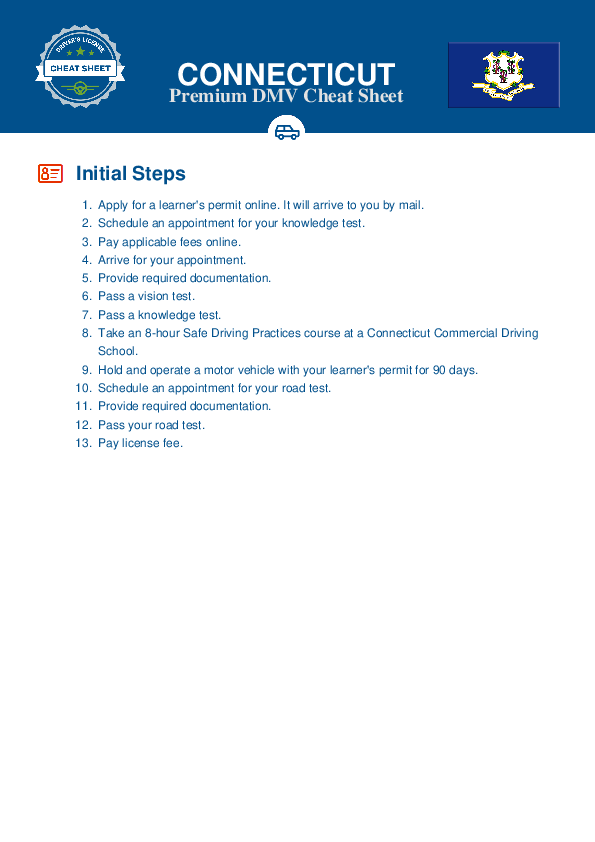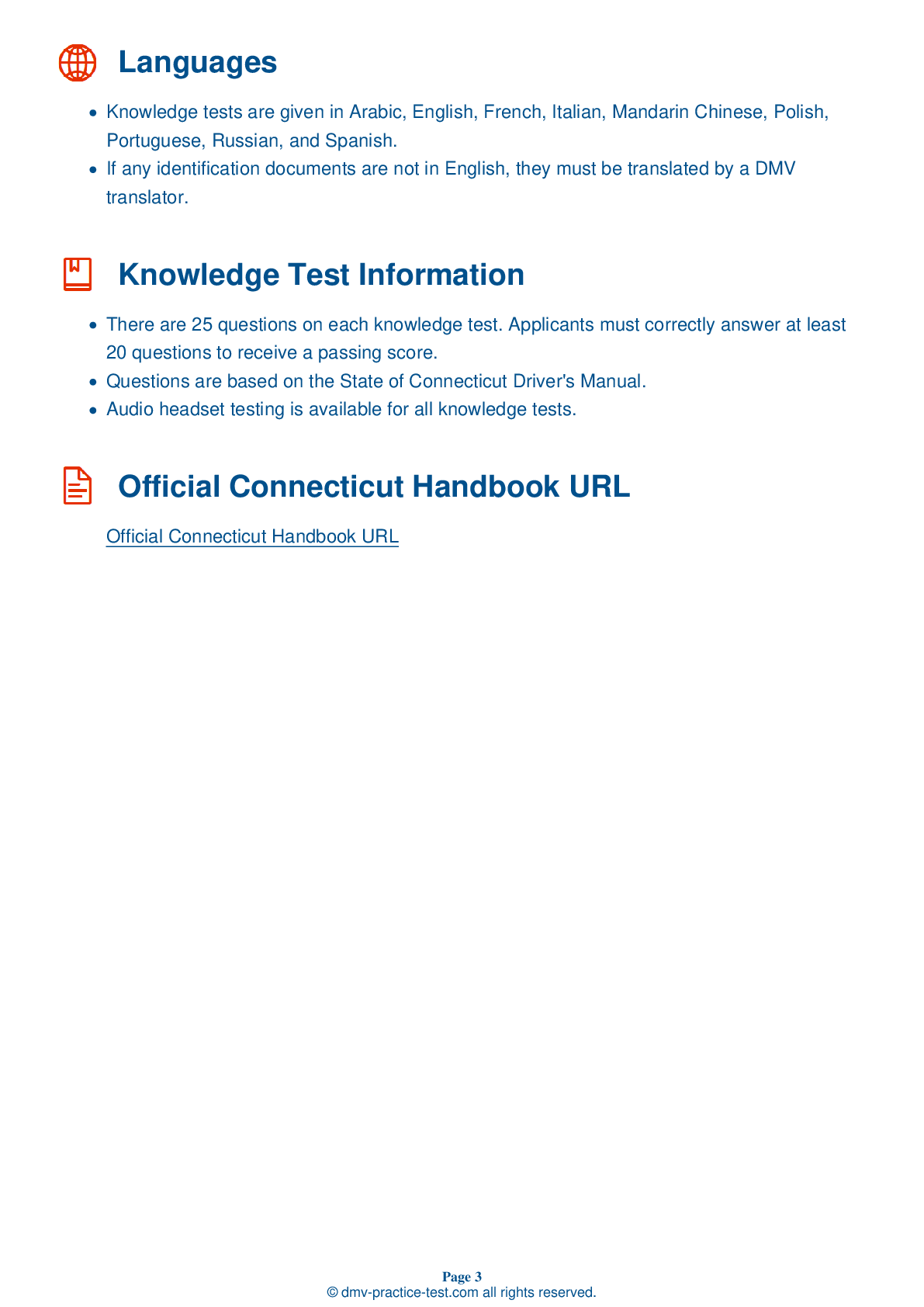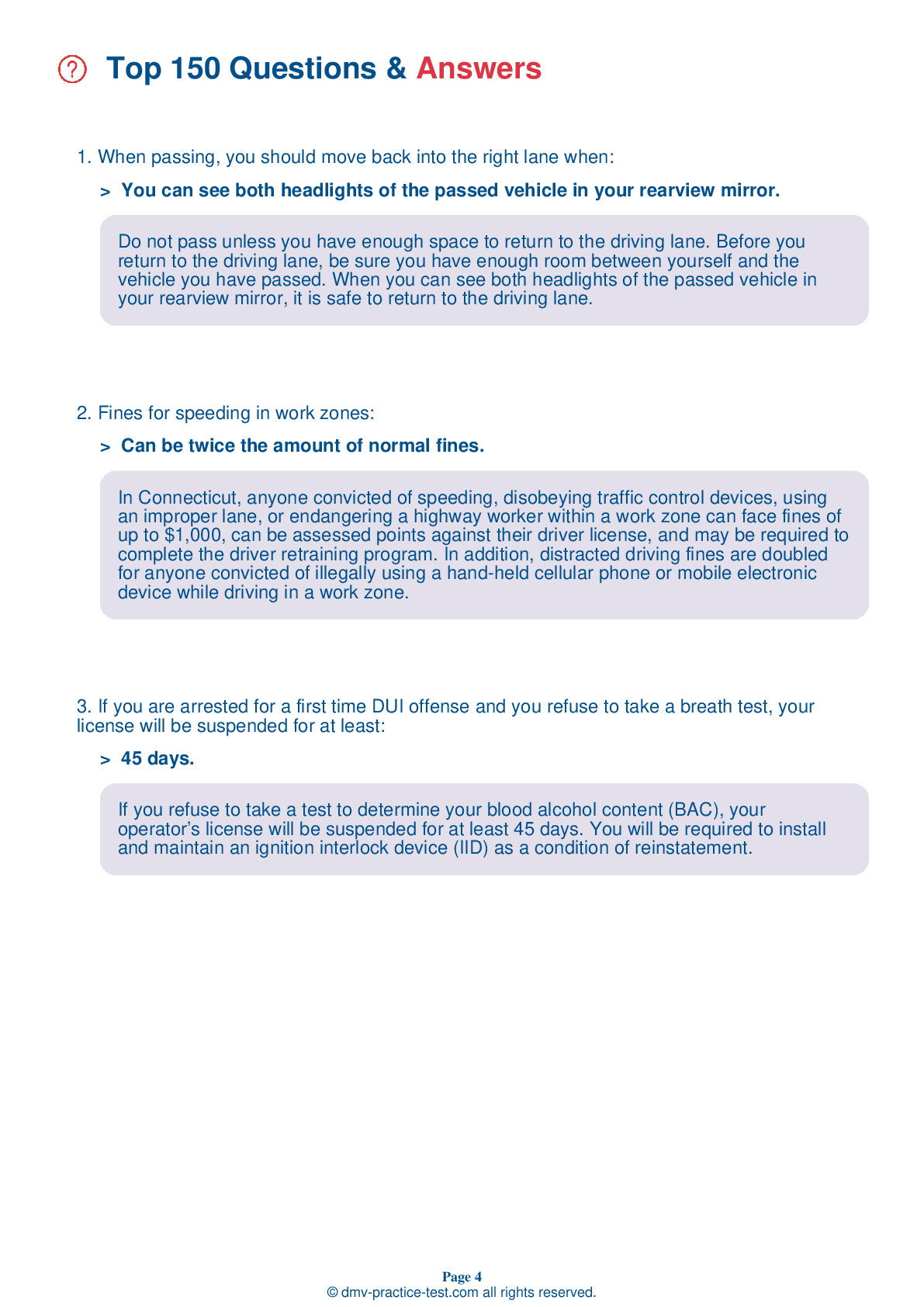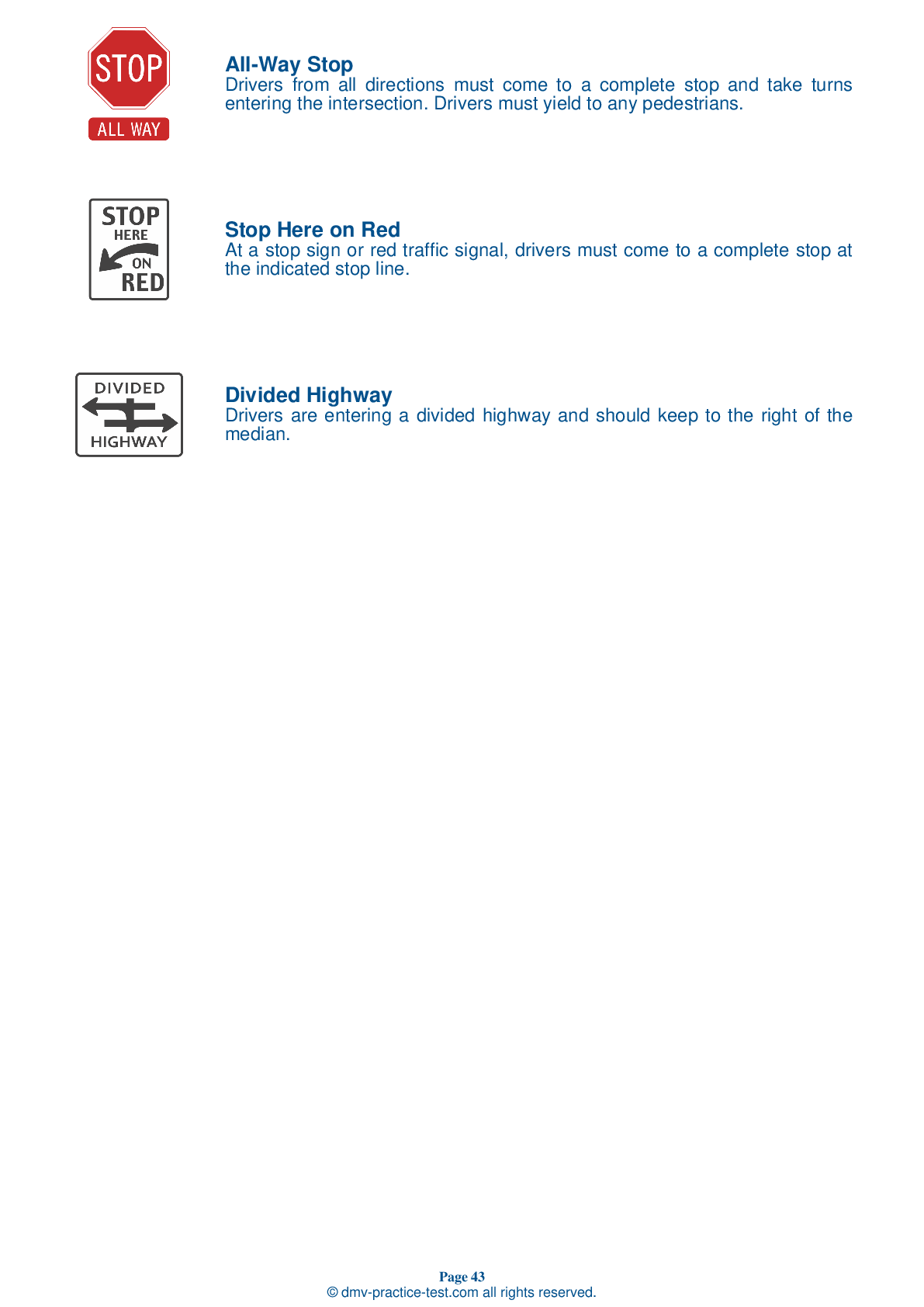FREE Connecticut DMV Practice Test #17 Page 2 of 3
This set of Connecticut DMV practise tests was just updated for January 2025. It includes questions based on the Connecticut Driver Handbook's most essential traffic signs and regulations for 2025. Use actual questions that are very similar (often identical!) to the DMV driving permit test and driver's licence exam to study for the DMV driving permit test and driver's licence exam.
Each practise test question has a hint and explanation to assist you in remembering the concepts. The written component of the official DMV test will include questions about road rules, traffic signs, and driving statutes, as well as information from the Driver Handbook.
To achieve the required passing grade, you must correctly answer 20 of the 25 questions. Take our DMV practise exam to help you prepare for your Connecticut instruction permit or driver's licence.
The DMV exam is available in several languages.
Using any form of testing help will result in an automatic fail, and the DMV may take further action against your driver's licence, so avoid it.
9 . Which of the following is not a safe driving practice when driving on the interstate?
You should always signal when moving your vehicle to the right or left. On an interstate, you should stay in the right lane if you are moving more slowly than the surrounding traffic. It is illegal to back up or make a U-turn on interstate highways, so if you miss your exit, you should proceed to the next exit.
10 . When approaching an intersection that is controlled by a flashing red traffic signal, you must:
Treat a flashing red traffic signal the same as you would treat a stop sign. Come to a complete stop, yield to oncoming traffic or pedestrians, and proceed when the way is clear.
11 . This road sign means:
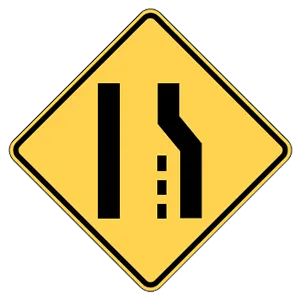
Warning signs provide notice to road users of a situation that might not be readily apparent and are usually yellow with black markings. This sign alerts drivers to the right lane ending and tells them to prepare for potential merging traffic.
12 . If you want to pass a pedestrian who is walking along the roadway and an oncoming vehicle is approaching, you should:
If possible, try to only deal with one roadway hazard at a time. If you want to pass a pedestrian but an oncoming vehicle is approaching, slow down and let the vehicle pass. You may then pass the pedestrian if it is safe to do so.
13 . What does this road sign mean?
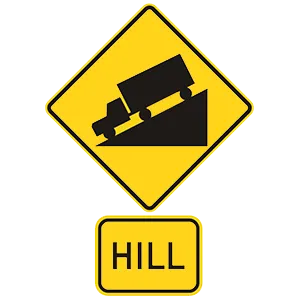
Warning signs are usually yellow with black markings. This sign indicates that you are approaching a steep hill. Slow down and be ready to shift to a lower gear to control your speed and protect your brakes from damage.
14 . A solid yellow arrow on a traffic signal means:
A solid yellow arrow means that the protection of a green arrow is ending. If you are turning in the direction of the arrow, you should prepare to stop and yield the right-of-way to oncoming traffic before turning.
15 . If you see a pedestrian using a guide dog or carrying a white cane:
Blind or partially blind pedestrians may carry a white cane or use the assistance of a guide dog. You must yield the right-of-way to a pedestrian with a guide dog or a white cane.
16 . If your wheels drop off the roadway or pavement edge, you should:
If your wheels drop off the roadway or pavement edge, do not attempt to turn back onto the roadway immediately. Instead, reduce your speed, check traffic, and gradually turn back onto the roadway when it is safe to do so.
See the exact questions that will be on the 2025 Connecticut DMV exam.
99.2% of people who use the cheat sheet pass the FIRST TIME
LT gives us an insight on how the cheat sheet provided her with all the study questions she needed before taking her test.
Joe initially studied with the handbook and failed his test, he eventually found us online, studied and pass his test the first time around.
